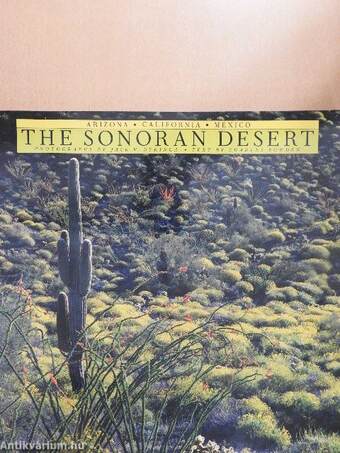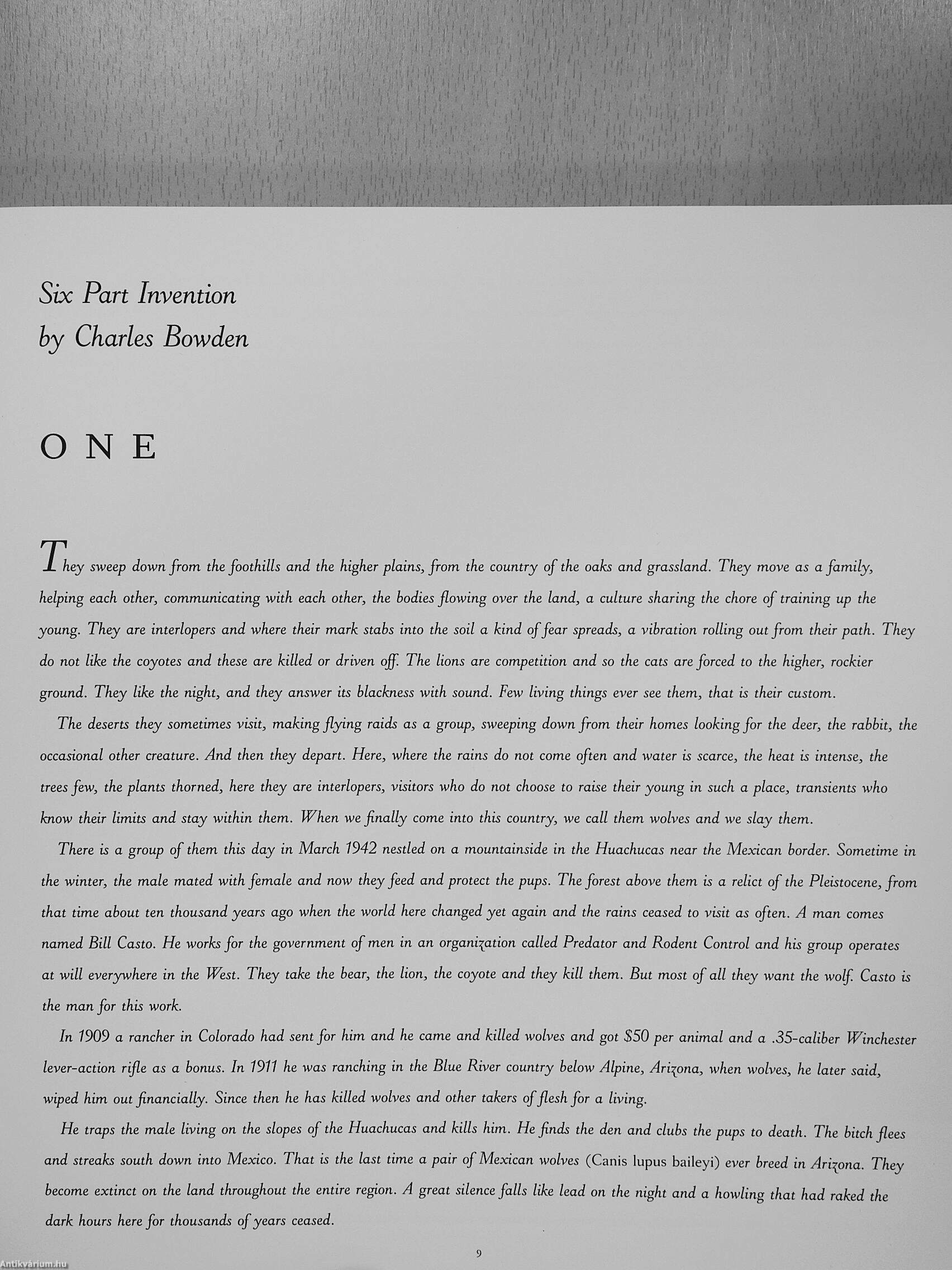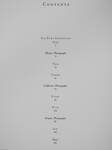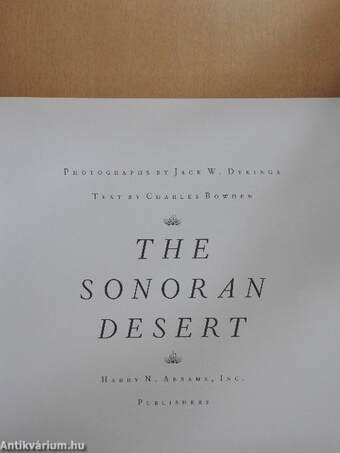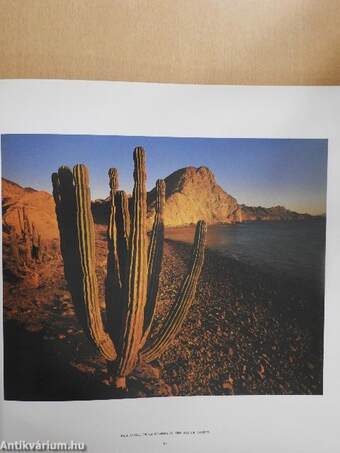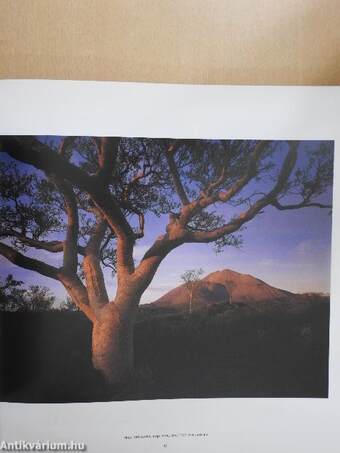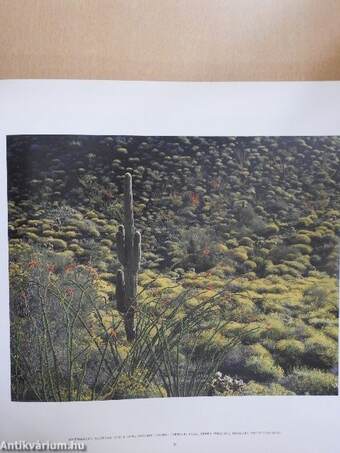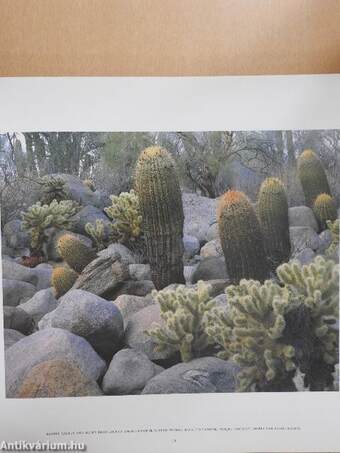1.062.439
kiadvánnyal nyújtjuk Magyarország legnagyobb antikvár könyv-kínálatát

VISSZA
A TETEJÉRE
JAVASLATOKÉszre-
vételek
The Sonoran Desert
Arizona, California, Mexico
| Kiadó: | Harry N. Abrams, Inc., Publishers |
|---|---|
| Kiadás helye: | New York |
| Kiadás éve: | |
| Kötés típusa: | Varrott papírkötés |
| Oldalszám: | 167 oldal |
| Sorozatcím: | |
| Kötetszám: | |
| Nyelv: | Angol |
| Méret: | 27 cm x 28 cm |
| ISBN: | 0-8109-2669-5 |
| Megjegyzés: | Színes fotókkal. |
naponta értesítjük a beérkező friss
kiadványokról
naponta értesítjük a beérkező friss
kiadványokról
Előszó
TovábbFülszöveg
The Sonoran Desert of the southwestern United States and northern Mexico sizzles in the sun. Daytime temperatures commonly soar above 120° F. The parched, mineral earth gets less than three inches of rainfall a year on average; some years, none at all.
Yet this is one of the most fascinating and beautiful places in North America. A large variety of plants—creosote bush, the fabled boojum, and numerous other cacti and succulents—flourish here, as do a wealth of birds, insects, and small mammals. Man is an uneasy resident, and, although modern cities such as Phoenix and Tucson survive on its fringes, the natural heart of the desert still rejects all but the most intrepid sojourners.
Two who know this desert well are photographer Jack Dykinga and writer Charles Bowden. Interwoven together, the personal visions of these two remarkable observers evoke the Sonoran Desert with extraordinary power. We may or may not wish to be in the desert as they have been, but in these pages we will... Tovább
Fülszöveg
The Sonoran Desert of the southwestern United States and northern Mexico sizzles in the sun. Daytime temperatures commonly soar above 120° F. The parched, mineral earth gets less than three inches of rainfall a year on average; some years, none at all.
Yet this is one of the most fascinating and beautiful places in North America. A large variety of plants—creosote bush, the fabled boojum, and numerous other cacti and succulents—flourish here, as do a wealth of birds, insects, and small mammals. Man is an uneasy resident, and, although modern cities such as Phoenix and Tucson survive on its fringes, the natural heart of the desert still rejects all but the most intrepid sojourners.
Two who know this desert well are photographer Jack Dykinga and writer Charles Bowden. Interwoven together, the personal visions of these two remarkable observers evoke the Sonoran Desert with extraordinary power. We may or may not wish to be in the desert as they have been, but in these pages we will come as close as possible to being there.
ABOUT THE AUTHORS
Jack Dykinga, winner of the Pulitzer Prize for Feature Photography in 1971, specializes in nature and landscapes and has published photographs in many major magazines around the country. His work has been exhibited at the Center for Creative Photography in Tucson and has won numerous awards. His second book. Stone Canyons of the Colorado Plateau, was published by Harry N. Abrams, Inc., in the spring of 1996.
Charles Bowden has published half a dozen books of nonfiction, mchxAmg Meical, Red Line, the highly regarded Desierto, and most recendy, the text for Abrams' Stone Canyons of the Colorado Plateau, for which Jack Dykinga provided the photographs.
125 photographs in full color Vissza
Témakörök
- Természettudomány > Növényvilág > Nemzeti parkok, arborétumok
- Idegennyelv > Idegennyelvű könyvek > Angol > Művészetek > Fotóművészet
- Idegennyelv > Idegennyelvű könyvek > Angol > Természettudományok > Földrajz
- Idegennyelv > Idegennyelvű könyvek > Angol > Természettudományok > Egyéb
- Természettudomány > Földrajz > Kontinensek földrajza > Téma szerint > Növényzet, állatvilág
- Természettudomány > Földrajz > Kontinensek földrajza > Topográfia szerint > Amerika
- Természettudomány > Földrajz > Kontinensek földrajza > Topográfia szerint > Sivatagok
- Természettudomány > Földrajz > Idegen nyelv > Angol
- Művészetek > Fotóművészet > Albumok > Külföldi
- Művészetek > Fotóművészet > Albumok > Tematikus
- Művészetek > Fotóművészet > Idegen nyelv > Angol
- Művészetek > Fotóművészet > Témái > Tájfényképészet
Charles Bowden
Charles Bowden műveinek az Antikvarium.hu-n kapható vagy előjegyezhető listáját itt tekintheti meg: Charles Bowden könyvek, művekMegvásárolható példányok
Nincs megvásárolható példány
A könyv összes megrendelhető példánya elfogyott. Ha kívánja, előjegyezheti a könyvet, és amint a könyv egy újabb példánya elérhető lesz, értesítjük.



